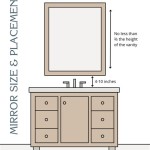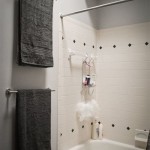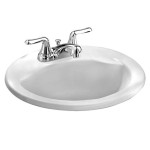Vintage 1950s Bathroom Sinks: A Nostalgic Fixture
The 1950s represent a distinctive era in American design, characterized by optimism, technological advancement, and a focus on suburban comfort. This period left an indelible mark on architecture, furniture, and even bathroom fixtures. Among these, the vintage 1950s bathroom sink stands out as a readily recognizable element, embodying the style and functionality that defined the decade. These sinks are now highly sought after by homeowners seeking to restore or emulate the mid-century modern aesthetic. Understanding the materials, designs, and evolution of these sinks provides valuable insight into this unique period in design history.
The post-World War II boom significantly impacted the housing market. The increased availability of affordable materials and mass production techniques allowed for a rapid expansion of suburban development. This, in turn, fueled demand for new and stylish bathroom fixtures. The 1950s bathroom was envisioned as a clean, bright, and convenient space, a reflection of the era's emphasis on hygiene and modern living. Bathroom sinks played a central role in achieving this vision.
Materials and Construction Techniques
The most common material used in the manufacturing of 1950s bathroom sinks was vitreous china, a porcelain enamel that is fired at high temperatures to create a durable, non-porous surface. Vitreous china offered several advantages: it was resistant to stains, scratches, and water damage, making it a practical choice for the bathroom environment. It also provided a smooth, glossy finish that was easy to clean and maintain. The manufacturing process involved molding the clay into the desired shape, applying the enamel coating, and then firing the sink in a kiln. This resulted in a sturdy and long-lasting product that could withstand daily use.
Cast iron sinks with porcelain enamel finishes were also relatively common, although generally considered a higher-end option due to their increased durability and weight. Cast iron provided a solid foundation, making these sinks less susceptible to chipping or cracking. The enamel coating offered the same benefits as vitreous china in terms of stain resistance and ease of cleaning. However, cast iron sinks were significantly heavier and more difficult to install, often requiring reinforced supports. The manufacturing process was also more complex, contributing to their higher cost.
During this era, advancements in plumbing technology also influenced sink design. Faucets shifted from separate hot and cold taps to more convenient single-handle or dual-handle mixers. These faucets were often made of chrome-plated brass, adding a touch of shine and sophistication to the sink. The integration of pop-up drains, operated by a lever or knob, offered a more hygienic and user-friendly alternative to traditional rubber stoppers.
Design Elements and Styles
The design of 1950s bathroom sinks reflected the broader aesthetic trends of the mid-century modern movement. Clean lines, geometric shapes, and a sense of simplicity were key characteristics. Sinks came in a variety of shapes, including rectangular, oval, and rounded designs. Undermount sinks, where the sink is installed below the countertop, were less common than self-rimming or drop-in sinks, which featured a visible edge or lip that rests on the countertop.
Color played a significant role in 1950s bathroom design. While white remained a popular choice for its clean and timeless appeal, pastel colors became increasingly fashionable. Pink, light blue, mint green, and yellow were frequently used to add a touch of vibrancy and personality to the bathroom. These colors were often incorporated into the sink itself, as well as the surrounding tiles, countertops, and accessories. The use of color was intended to create a cheerful and inviting atmosphere.
Different types of sink installations were prevalent during this period. Wall-mounted sinks, also known as floating sinks, were a popular choice for smaller bathrooms or powder rooms. These sinks were mounted directly to the wall, freeing up floor space and creating a more open and airy feel. Pedestal sinks, which consist of a sink basin supported by a decorative pedestal base, were also widely used. Pedestal sinks offered a classic and elegant look, but provided limited storage space. Console sinks, which combined a sink basin with a metal or wooden frame, offered a compromise between wall-mounted and pedestal sinks, providing some storage or display space.
Key Distinguishing Features and Manufacturers
Several key features distinguish 1950s bathroom sinks from those of other eras. The prevalence of colored sinks, particularly in pastel shades, is a defining characteristic. The use of simple, geometric shapes and clean lines further reinforces the mid-century modern aesthetic. The overall design often prioritized functionality and ease of use, reflecting the era's focus on convenience and practicality. Specific details, such as the style of the faucet handles and the type of drain mechanism, can also help to identify a vintage 1950s sink.
Several prominent manufacturers dominated the bathroom fixture market during the 1950s. American Standard was a leading producer of vitreous china and cast iron sinks, known for their quality and durability. Crane Plumbing was another major player, offering a wide range of sink styles and colors. Kohler, a company with a long history in the plumbing industry, also produced a variety of 1950s bathroom sinks, often noted for their innovative designs. Identifying the manufacturer's mark on the sink can help to determine its age and origin.
The dimensions of 1950s bathroom sinks generally adhered to standard sizes, but variations existed depending on the specific model and manufacturer. Typical sink widths ranged from 18 to 24 inches, while depths typically fell between 15 and 20 inches. The height of the sink, when installed, was typically around 31 to 36 inches, although this could vary depending on the height of the pedestal or console. Understanding these dimensions is important for anyone looking to replace or restore a vintage 1950s bathroom sink.
Restoring a vintage 1950s bathroom sink can be a rewarding project for homeowners seeking to preserve the character of their home. The process typically involves cleaning the sink thoroughly, repairing any chips or cracks in the enamel, and replacing worn-out hardware, such as faucets and drains. Depending on the condition of the sink, professional refinishing may be necessary to restore its original luster. When selecting replacement parts, it is important to choose those that are compatible with the sink's original design and style. Sourcing vintage or reproduction faucets and hardware can help to maintain the sink's authentic appearance.
The enduring appeal of the 1950s bathroom sink lies in its ability to evoke a sense of nostalgia and timeless elegance. These sinks represent a specific moment in design history, characterized by optimism, innovation, and a commitment to quality. Whether used in a period-authentic renovation or integrated into a more contemporary setting, the vintage 1950s bathroom sink serves as a reminder of a bygone era, adding a touch of character and charm to any bathroom space.

1950s Bathroom Redecoration Mid Century Modern Style

1950 Vintage Crane Yorkshire Bathroom Sink Dea Machineries

Vintage Bathrooms Bathroom Accessories Luxury Sink Design

Updating Our 1950s Bathroom With Style Checking In Chelsea

Rare 1950s Shirley Steel Bathroom Vanity And With A Drainboard Sink Retro Renovation

12 Vintage Bathroom Sinks From American Standard In 1955 Retro Renovation

1950s Bathrooms And A Pink Gray Kitchen Friday Finds Town Country Living

1930 S Through 1950 Standard Lavatory Pedestal Sink Prop Al Dea Bathroom Machineries

Retro Inspiration Nostalgic Bathroom Designs And Styles From The 1950s Rare Historical Photos

Mid Century Bathroom Sink 295 Aqua Turquoise Teal Seaglass Antique Vanity Color Design Trendy
Related Posts







